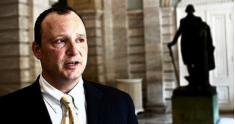
Meet Mike Flowers, head of the big data skunk-works in New York City. Mike has prevented fires by selecting the right data and making smart decisions. In New York there are about 2,000 fires a year in one to three family apartment buildings and about 20,000+ complaints about these fires annually. Now, the question is how do you focus on them?
Flowers’ team came in and asked the fundamental question, “what’s the best predictor of which of these buildings was going to burn?” Sifting through the data they found that buildings where the landlord had unpaid taxes or faced financial foreclosure proceedings, were at most risk. By taking a look into these two factors together, they were able to get a five-fold increase in finding a violation when they sent an inspector out. Relating to about an eight-fold increase in the ability to prevent injury to a fireman.If you take the stream of complaints and filter them by this data, you’ve transformed how you do building inspections.You’ve proven to the building department, the fire department, the sanitation folks, and the guy in charge of the budget, that this form of predictive analytics is something that they need to pay attention to.
Here is the secret to what Flowers’ did (according to him):
Flowers’ team came in and asked the fundamental question, “what’s the best predictor of which of these buildings was going to burn?” Sifting through the data they found that buildings where the landlord had unpaid taxes or faced financial foreclosure proceedings, were at most risk. By taking a look into these two factors together, they were able to get a five-fold increase in finding a violation when they sent an inspector out. Relating to about an eight-fold increase in the ability to prevent injury to a fireman.If you take the stream of complaints and filter them by this data, you’ve transformed how you do building inspections.You’ve proven to the building department, the fire department, the sanitation folks, and the guy in charge of the budget, that this form of predictive analytics is something that they need to pay attention to.
Here is the secret to what Flowers’ did (according to him):

Now that they have established the correct data and have scaled the system to a larger event-based system of real time data in New York, this allows the government to respond in real time and solve problems. Flowers’ team had not done that until they had the basics there. That is what I think a great city technology person looks like.
This is Brett Goldstein, the chief data officer of Chicago. He is a former police officer and former Chief Executive Officer (CEO) of Open Table. He is trying to unleash a great deal of web analytics in Chicago, by building a system that looks in real time and makes real time decisions in the city. The system would understand the event streams and understand the appropriate course of action. In a way he is building a Ferrari, a very sophisticated instrument, due to his experience I have a lot of trust in his ability to complete the project.
There’s another interesting dynamic going on amongst the top minds in big data. The Chief Technology Officer (CTO) types of the top ten cities get together with the White House and we talk about common problems and what we want to work on. There was a real sense among these people that for things like predictive analytics it all boils down to really understanding your people, customer intimacy and the building of the system. There is a predilection to build it ourselves and not go with vendors. As Brett says, “for a Custom Relationship Management system, I can buy it from a vendor, but I don’t know quite what I’m building yet, and I have to get really close to customers.”
This is Brett Goldstein, the chief data officer of Chicago. He is a former police officer and former Chief Executive Officer (CEO) of Open Table. He is trying to unleash a great deal of web analytics in Chicago, by building a system that looks in real time and makes real time decisions in the city. The system would understand the event streams and understand the appropriate course of action. In a way he is building a Ferrari, a very sophisticated instrument, due to his experience I have a lot of trust in his ability to complete the project.
There’s another interesting dynamic going on amongst the top minds in big data. The Chief Technology Officer (CTO) types of the top ten cities get together with the White House and we talk about common problems and what we want to work on. There was a real sense among these people that for things like predictive analytics it all boils down to really understanding your people, customer intimacy and the building of the system. There is a predilection to build it ourselves and not go with vendors. As Brett says, “for a Custom Relationship Management system, I can buy it from a vendor, but I don’t know quite what I’m building yet, and I have to get really close to customers.”

Another city data hero of mine is Rajeev Bhatia of San Francisco. He has used his position in public health to amass hundreds of data indicators in San Francisco, to ask what makes a healthy and sustainable city? He is compiling all sorts of public data by going across departments, trying to understand the health implications of, for example, traffic. If he sees there are many accidents and people are killed somewhere, that is a health response.
“Over a two or three-year period, we tested and evaluated about 300 measures and eventually settled on about 100 measures. A comprehensive, healthy, equitable, sustainable city. This is now called the Sustainable Communities Index.”
“Over a two or three-year period, we tested and evaluated about 300 measures and eventually settled on about 100 measures. A comprehensive, healthy, equitable, sustainable city. This is now called the Sustainable Communities Index.”
So much of this is not about technologies, it’s about influencing people. When he built this sustainability communities index, he stole a page from the environmental index, built this new thing, and now it’s an instrument that’s being shared around the country.
We have all these cities doing different things, the question then is how do scale and collaborate? We live in an interesting moment where hackathons and bottms up systems are being employed similarly in different cities.
We have all these cities doing different things, the question then is how do scale and collaborate? We live in an interesting moment where hackathons and bottms up systems are being employed similarly in different cities.
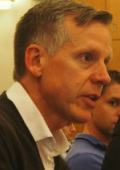
In the United States the coordination is often done by Deputy White House CTO Chris Vein. The city as a platform, needs to needs someone to moderate, figure out standards and how people are using them; this is what the White House is doing.
The revolution of big data is being completely led by cities. The White House CTO is there figuring out if there should there be national policy to open up data, privacy and information policy. For example, procurement is very much vested, as we know, with small companies. The White House just came up with something called Easy Procure, which is a way of making it easy for the federal government to procure lower-dollar request for proposals (RFP) very quickly. Cities are now adopting similar policy.
The revolution of big data is being completely led by cities. The White House CTO is there figuring out if there should there be national policy to open up data, privacy and information policy. For example, procurement is very much vested, as we know, with small companies. The White House just came up with something called Easy Procure, which is a way of making it easy for the federal government to procure lower-dollar request for proposals (RFP) very quickly. Cities are now adopting similar policy.
Key points
Practical vs. Mechanistic
Remember the Bronx, be practical.
It is not just a bunch of data in a box.
Intimacy vs. Outsourcing
To really understand what is going on you must understand your citizens.
Paying a vendor to undersatnd citizens creates a disconnect.
Winning City Hall Colleagues
It takes one department at a time and people realizing it works for them.
Holistic Data Approaches
Remember Rajeev’s approach that gives a 360 degree view of your city.
Collaboration Across Cities
There’s a great desire to share and build, do not be bashful.
Procurement / Leadership
Get elected officials to pay attention.
Strong leadership can make the difference.
(Cont. in The City as a Platform Pt. 3)
Remember the Bronx, be practical.
It is not just a bunch of data in a box.
Intimacy vs. Outsourcing
To really understand what is going on you must understand your citizens.
Paying a vendor to undersatnd citizens creates a disconnect.
Winning City Hall Colleagues
It takes one department at a time and people realizing it works for them.
Holistic Data Approaches
Remember Rajeev’s approach that gives a 360 degree view of your city.
Collaboration Across Cities
There’s a great desire to share and build, do not be bashful.
Procurement / Leadership
Get elected officials to pay attention.
Strong leadership can make the difference.
(Cont. in The City as a Platform Pt. 3)
Video

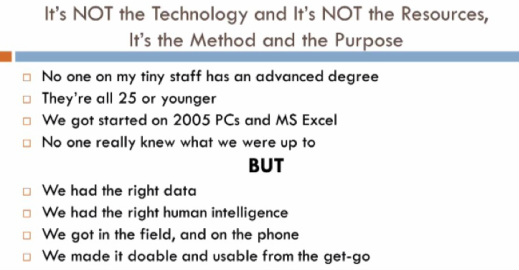
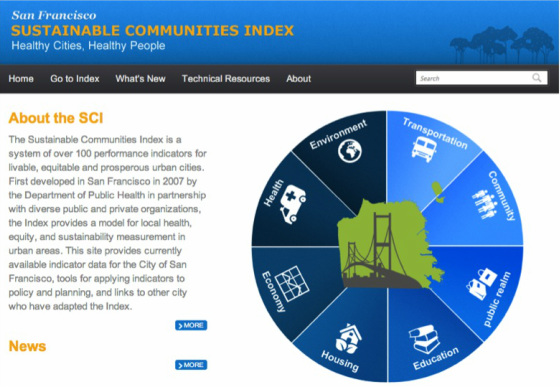
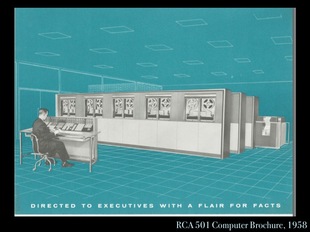
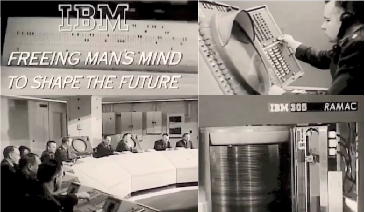
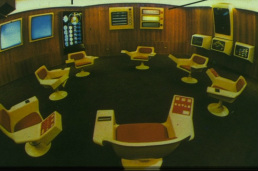
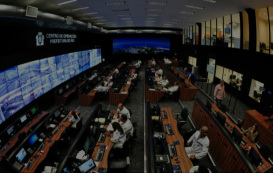
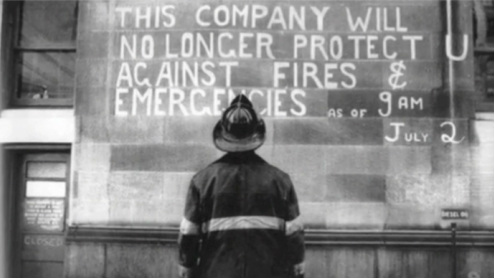
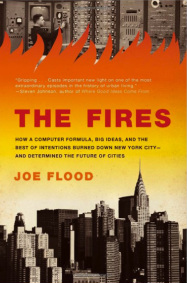
 RSS Feed
RSS Feed
